2019 Merit Award
AIA Cleveland
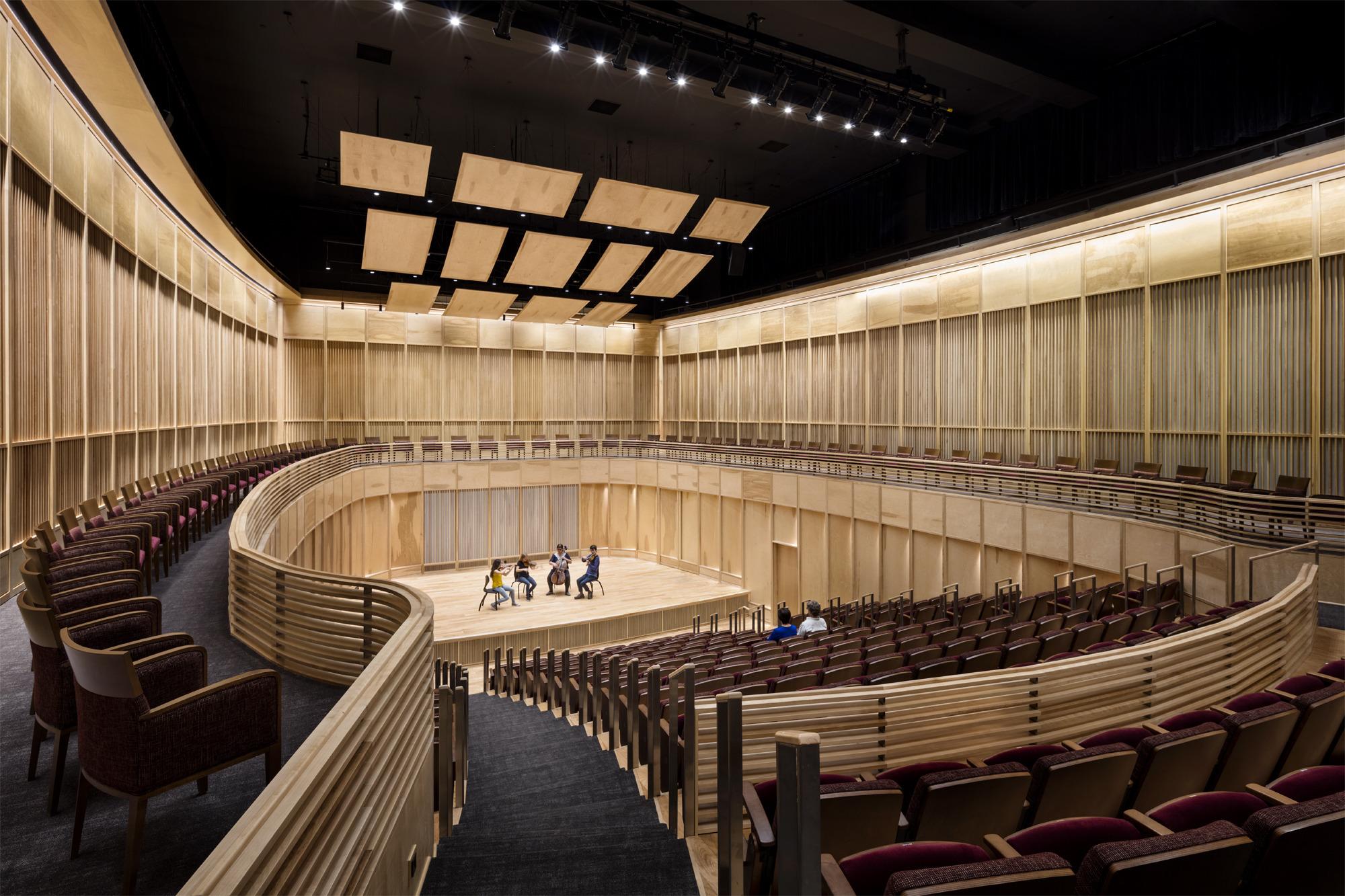
Project Location
Reno, NV
Program
Recital hall, recording studios, art museum, and more
Services
Architecture, interiors, theatrical design, ITDG, audiovisual, acoustics
Awards
AIA Nevada, 2019 Merit Award
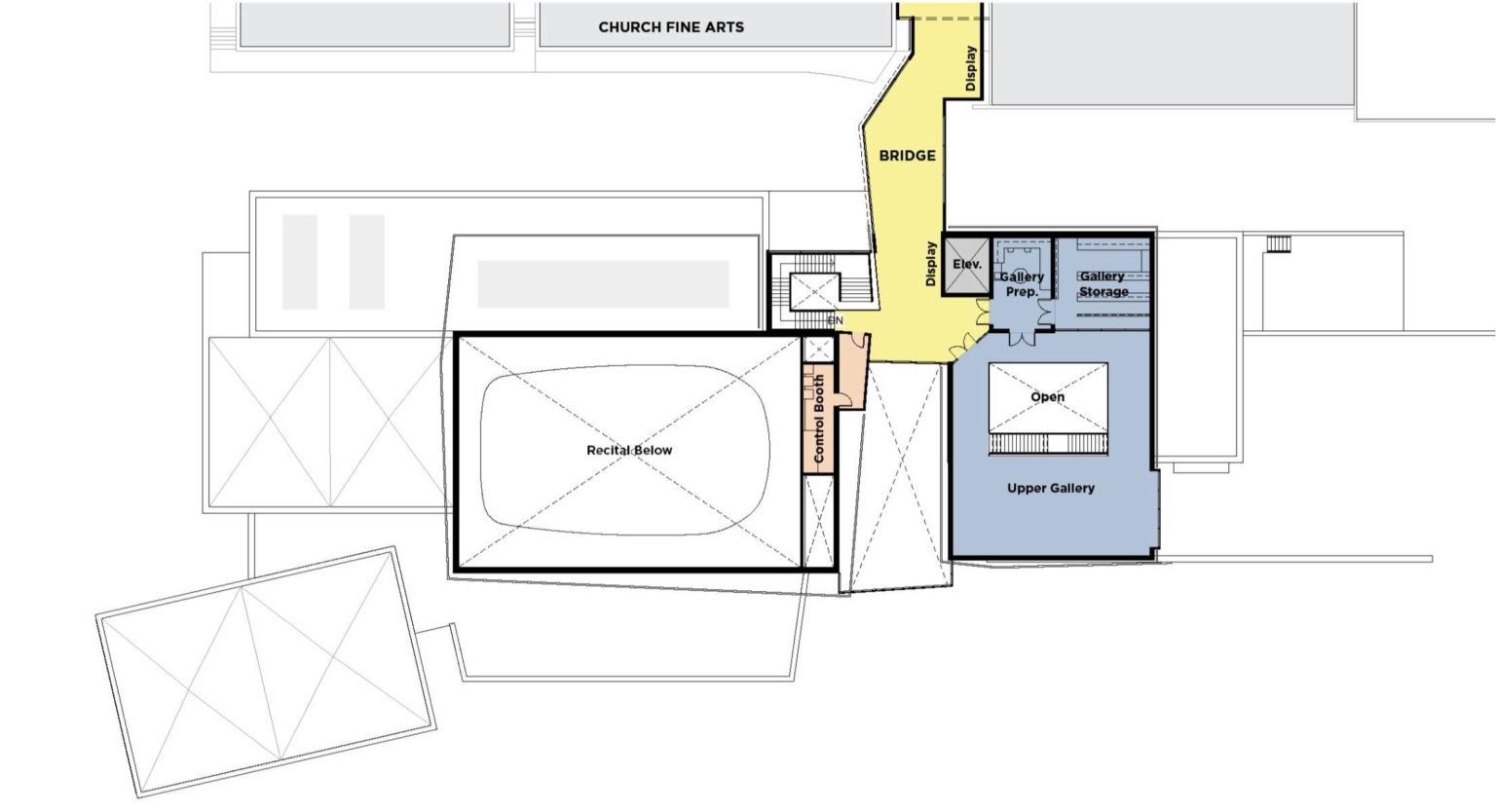
Our design utilizes a multi-tiered lobby to connect the plaza, street, and bridge levels.

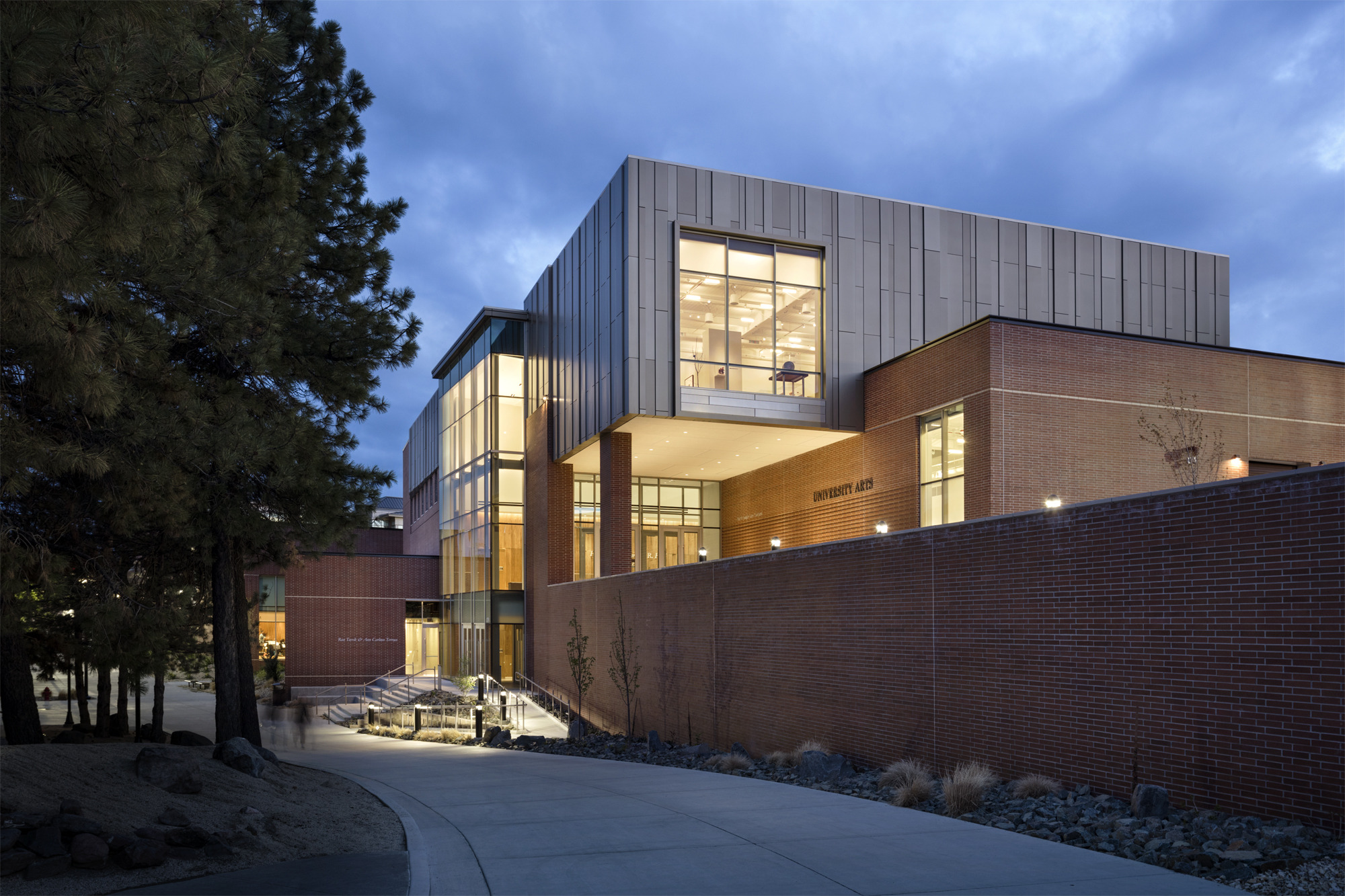
DLR Group’s design for the University of Nevada, Reno’s University Arts Building exceeds expectations, creating a space that not only inspires creativity and sound but also delivers an aesthetically pleasing environment. This innovative design transforms ordinary spaces into extraordinary realms of inspiration.
The University Arts Building successfully tackles many complex issues and houses a range of arts programs, including a recital hall, recording studio, electro acoustic laboratory, rehearsal and practice rooms, art museum, and fabrication lab.
The outdoor plaza links to campus pedestrian walkways and preserves a large grass hill. A raised walkway connects the original Church Fine Arts building with the new facility, bridging the University’s legacy with its newest chapter of expanded visual and performing arts programs.
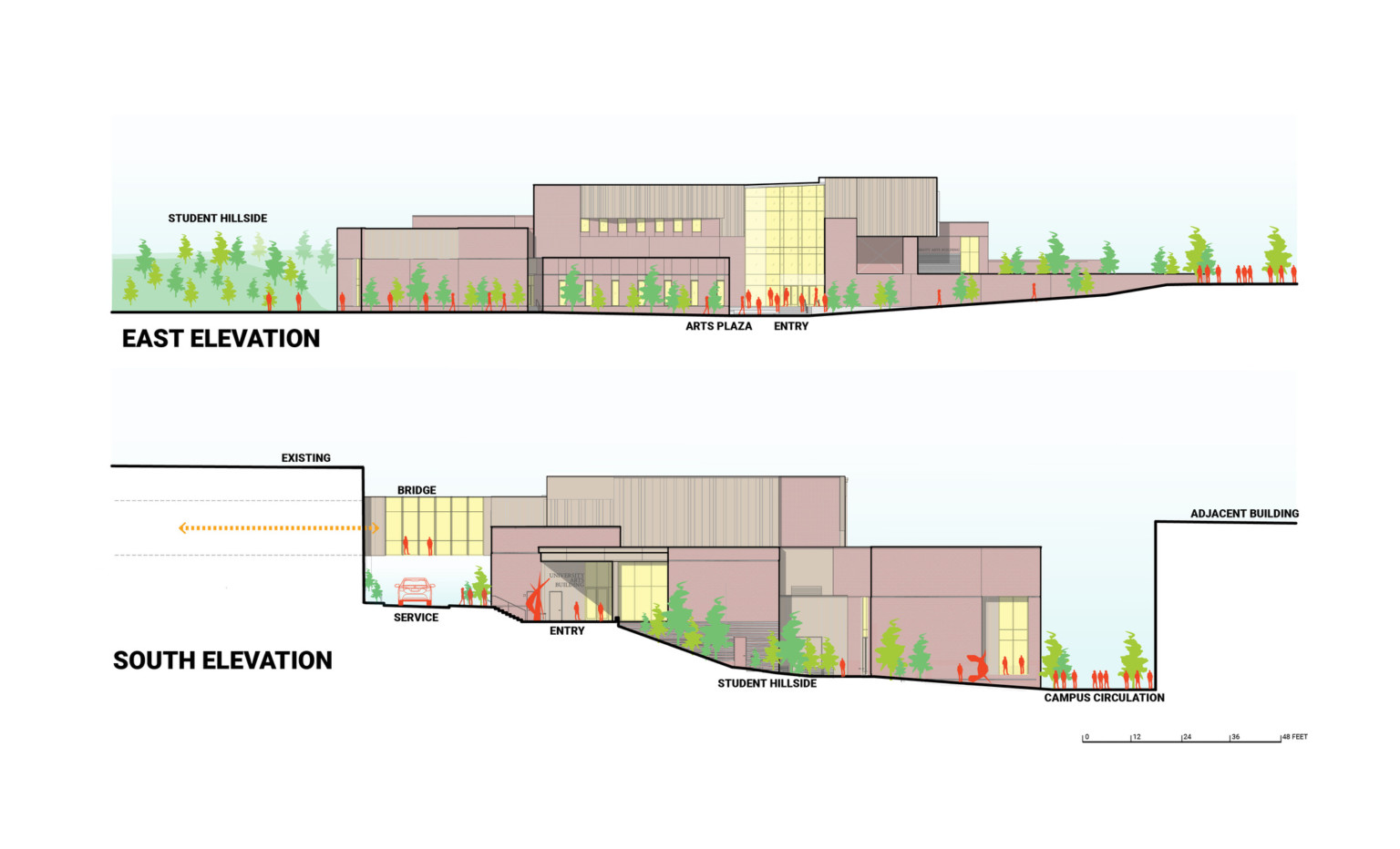
The new addition efficiently deals with circulation, loading, access, and building structure.
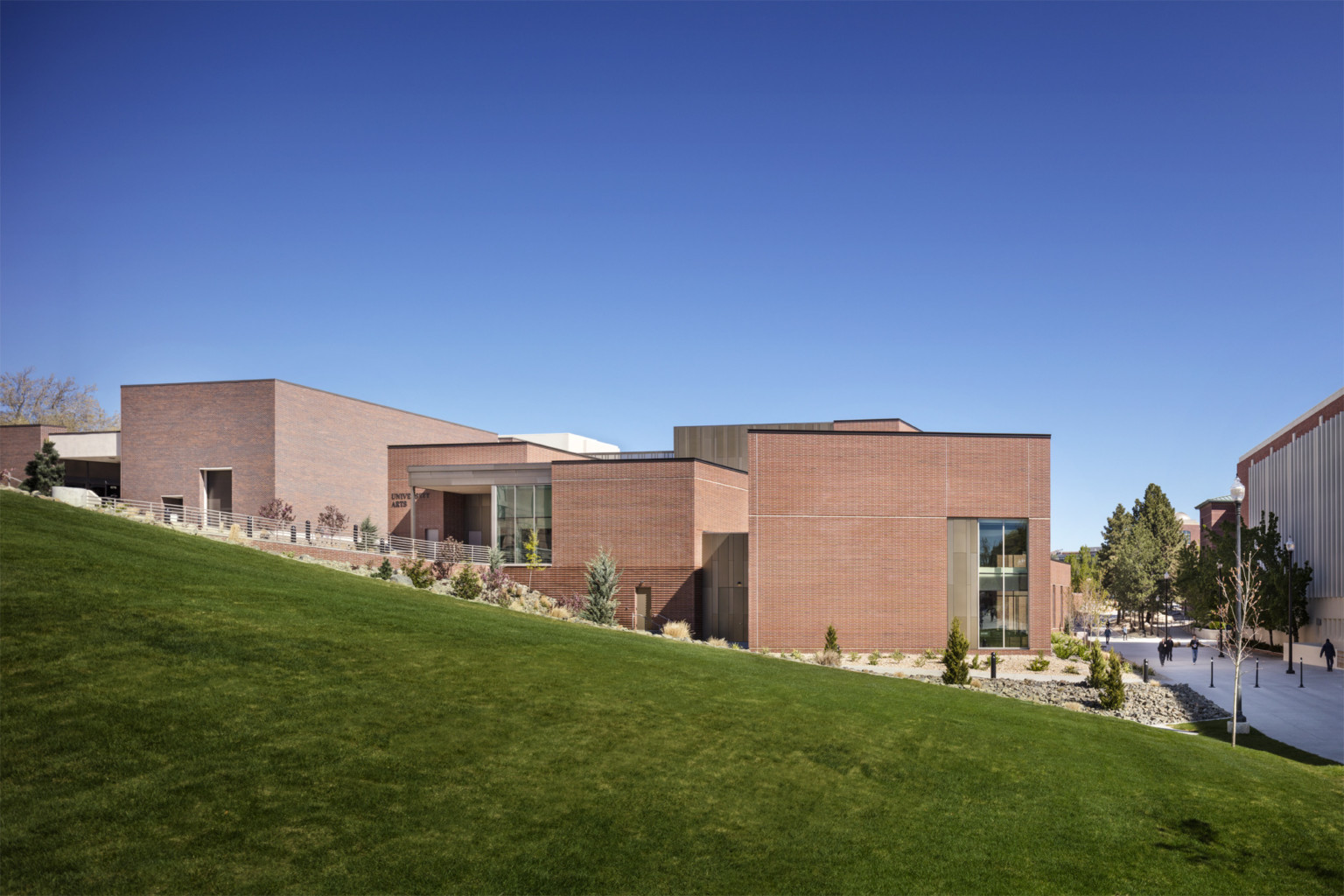
It engages the topography of the site in a way that creates an active outdoor area.
Upon entering the University Arts Building, visitors are greeted by a multitiered lobby, connecting to the plaza, street, and bridge levels, and serving as a hub and showcase for performance, display, and learning.
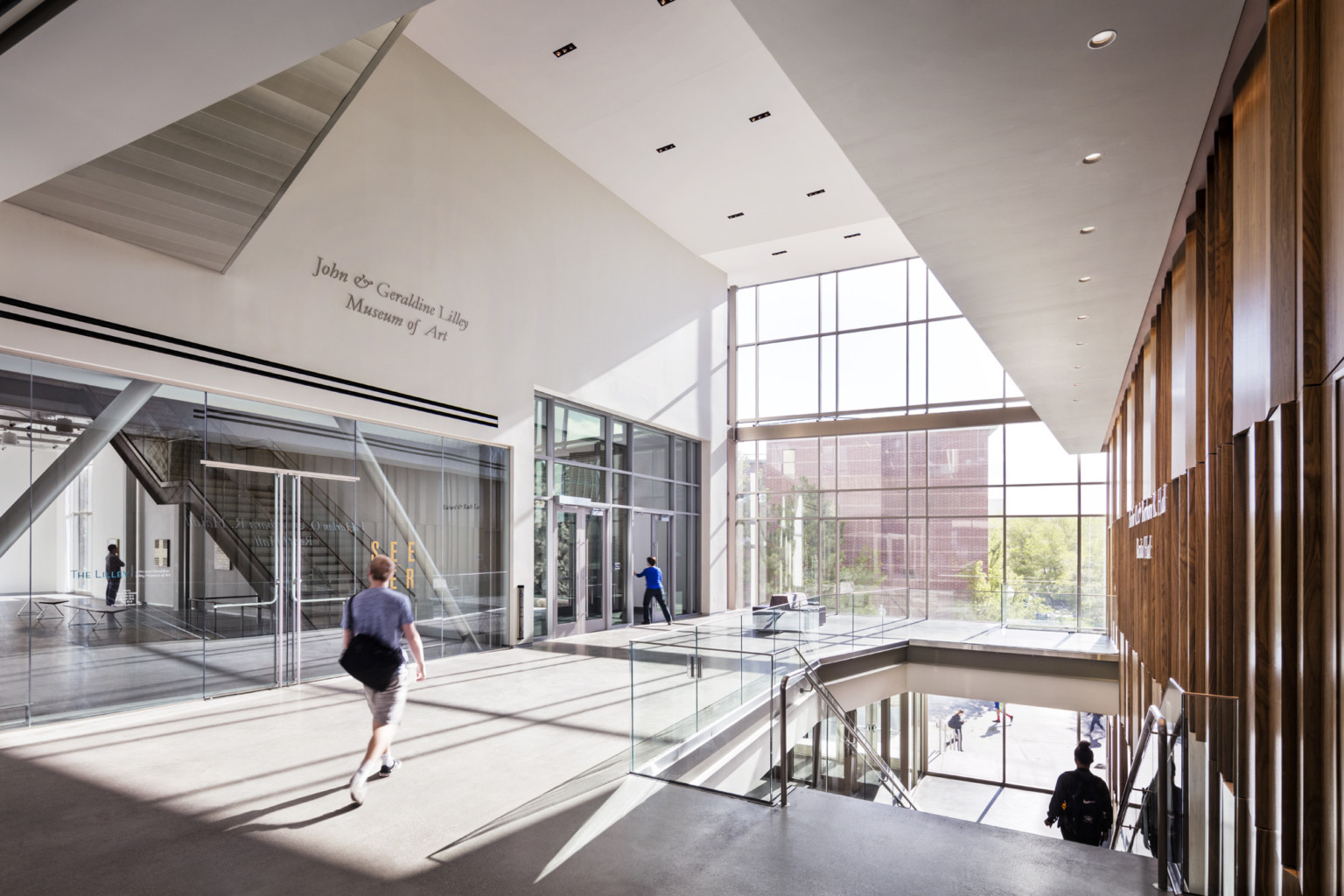
Natural daylight and expansive windows provides visual and physical connection.
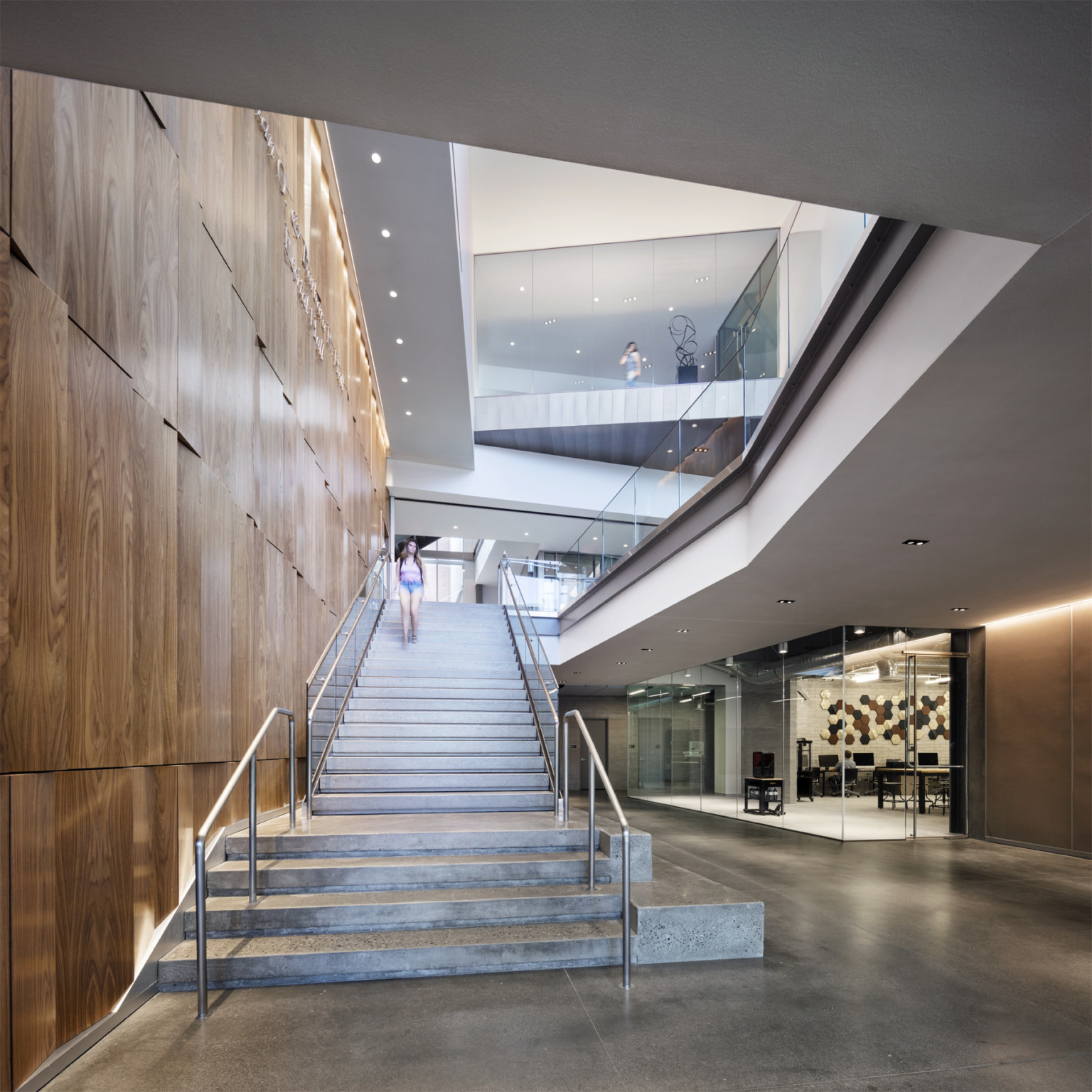
The Fabrication Lab in bottom right, exposes the making from within and encourages collaboration with other departments.
The hall’s narrow bowl shape creates reverberation and the effect of being enveloped by sound. Lower wooden walls in the space are highly diffusive, broadcasting sound in many directions; upper side walls conceal variable acoustic drapery and acoustic diffusive panels.
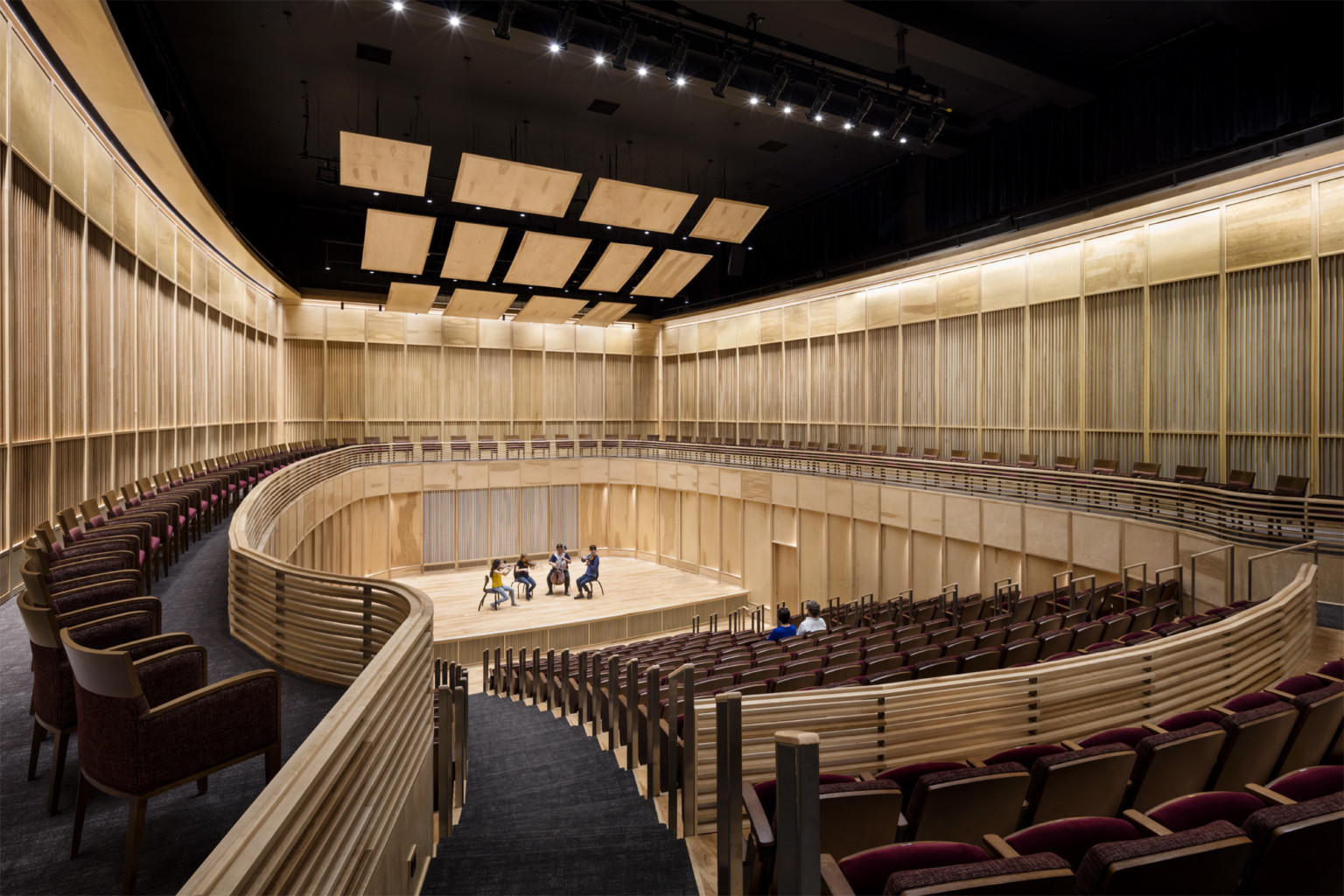
The recital hall’s wraparound balcony affords audiences a unique perspective and can also provide students closer views of musician hand positions and conductor gestures.
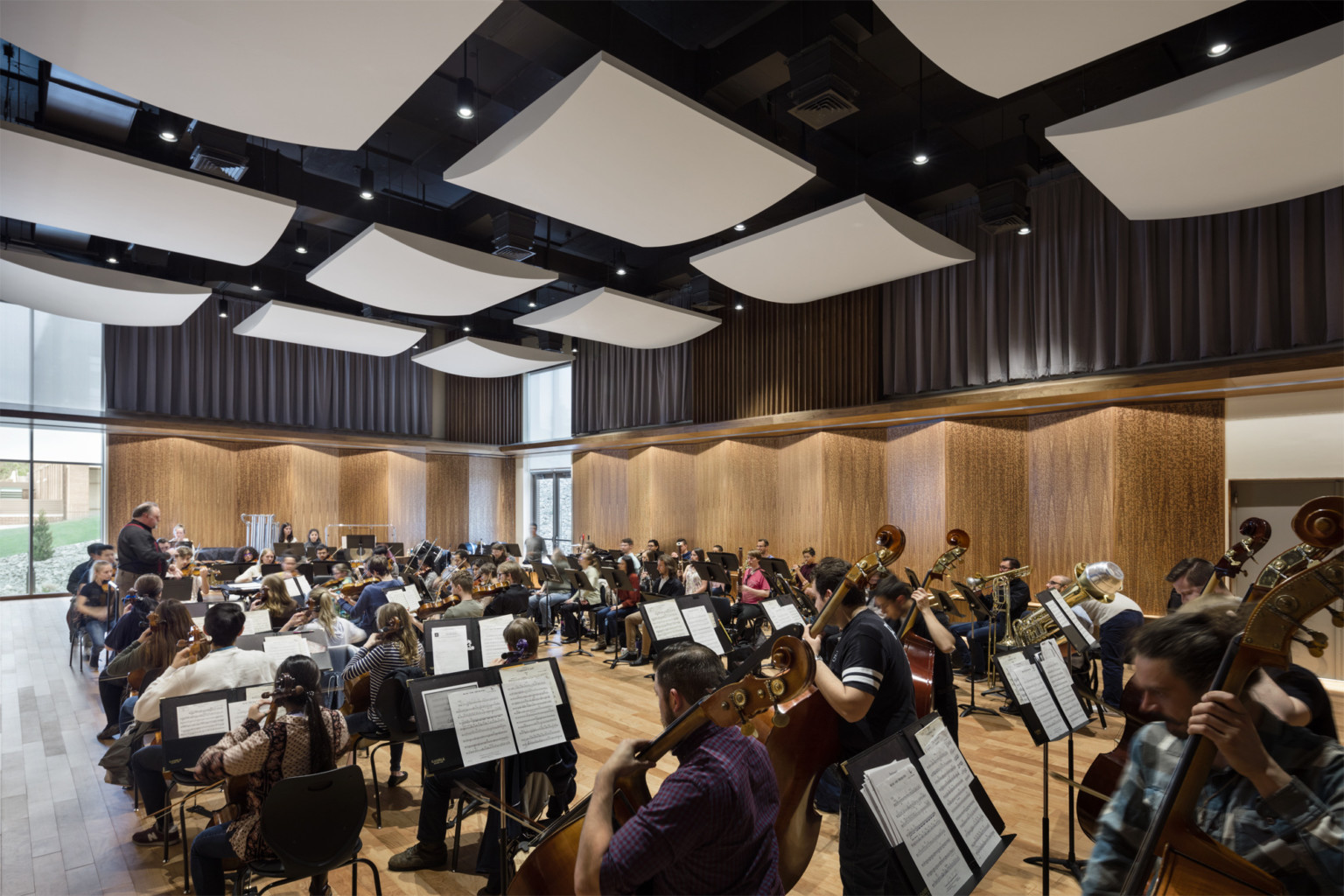
To accommodate a variety of performance needs, all performance and rehearsal rooms can be tuned using adjustable acoustic drapery panels.
The electroacoustic composition lab, a first-of-its-kind in Nevada, is highly flexible, with embedded technology and infrastructure that allow for a wide array of digital music composition, playback, and enhanced cross-discipline collaboration between musicians and students in video production, visual arts, and engineering. The window into the corridor gives students a chance to see the process live without being in the room, furthering the university’s principle of exposing the arts to a larger audience.
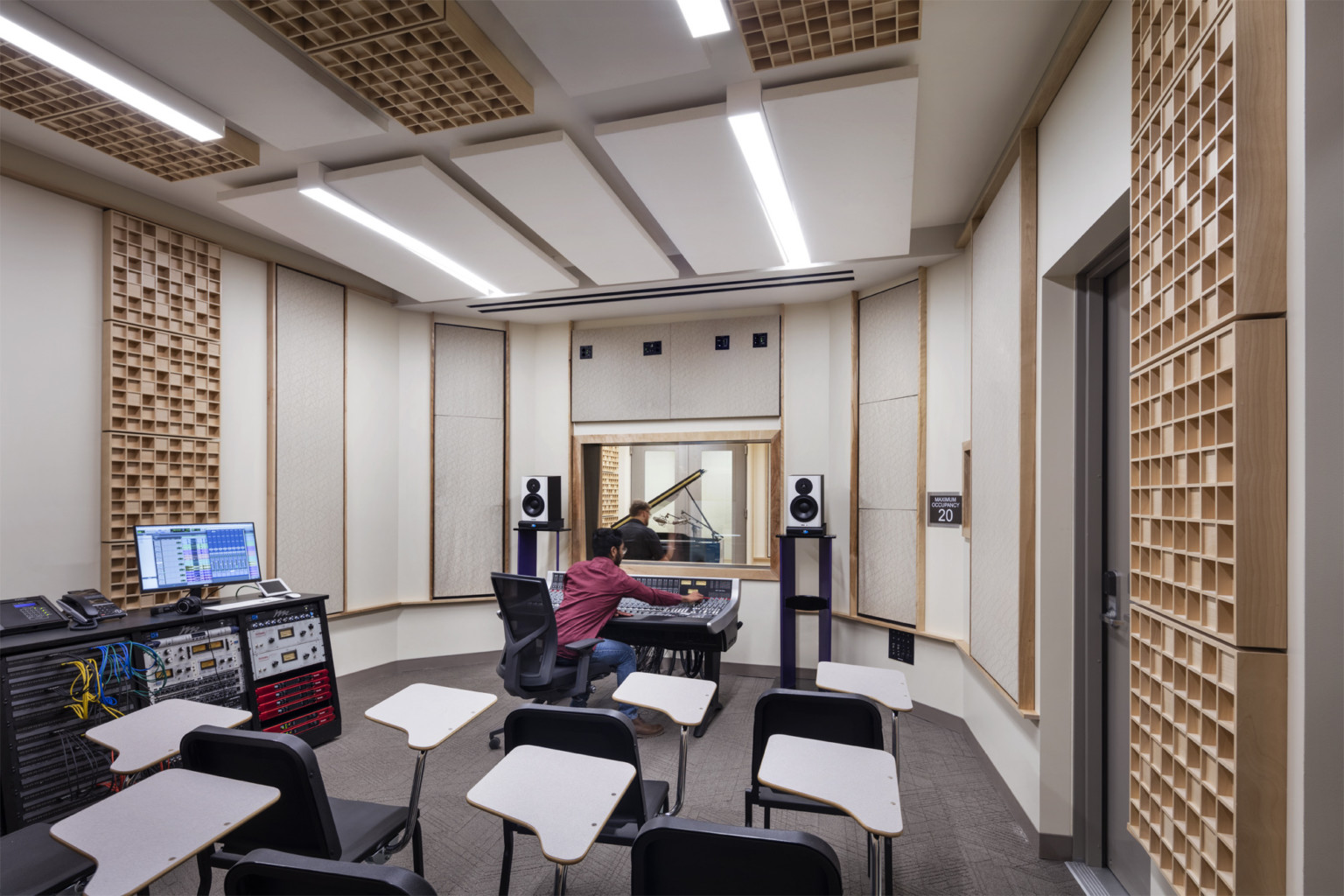
Electro acoustic lab and recording studio for students.
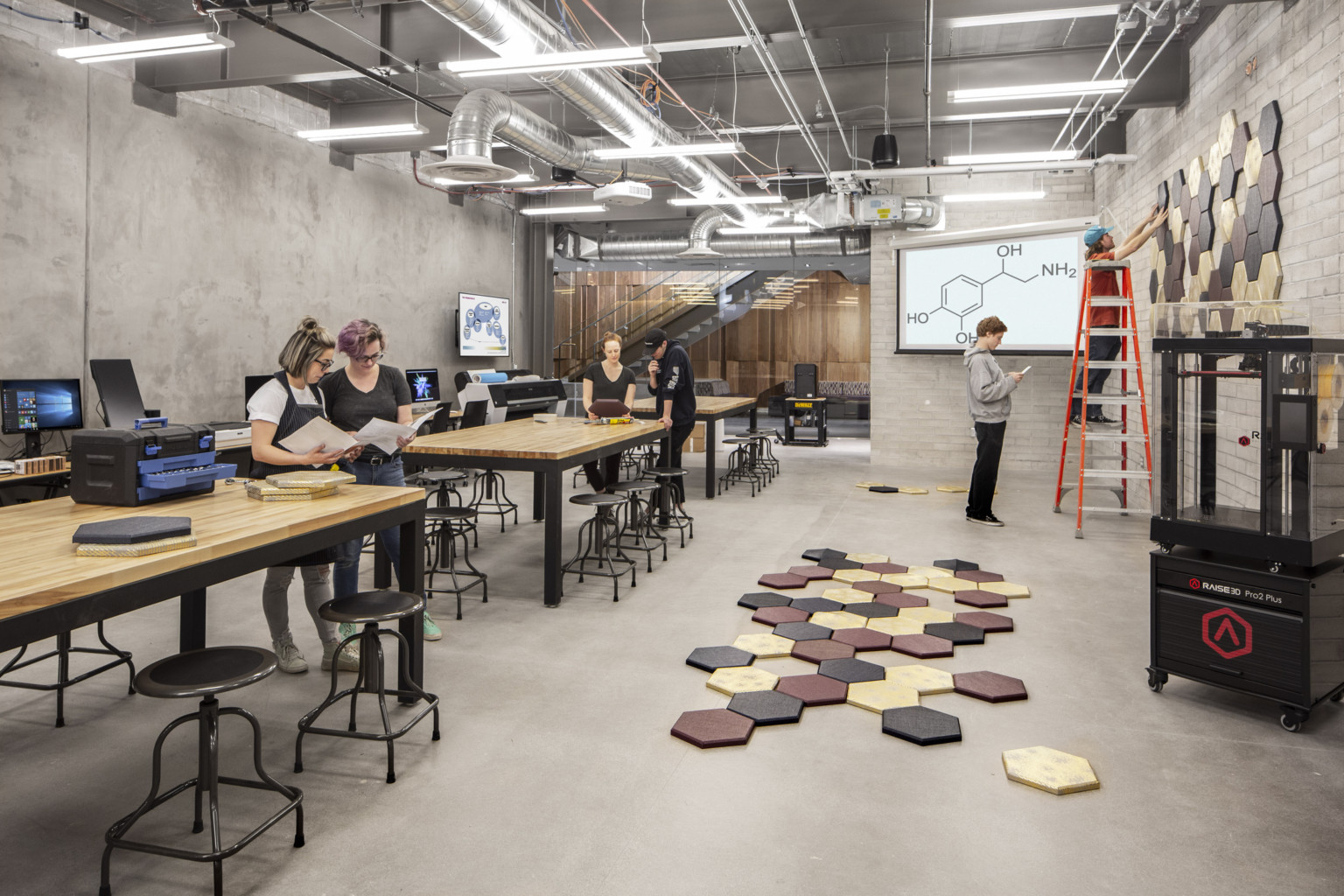
Fabrication Lab – Designed as a utilitarian workshop, the lab offers a working area and display area, bound by glass and jutting into the plaza level lobby.
The Lilley Museum of Art features atmospheric and security protocols necessary to house and display oversized objects, antique and climate-sensitive artworks, and items of significant value, improving the university’s ability to borrow artwork from collectors and museums and to show more works from its permanent collection. The museum's north-facing position allows abundant daylight to enter the upper level and creates a front porch effect at the lower level. At night, the window creates a beacon of light, illuminating the art objects and giving the effect that the building is glowing with artwork.
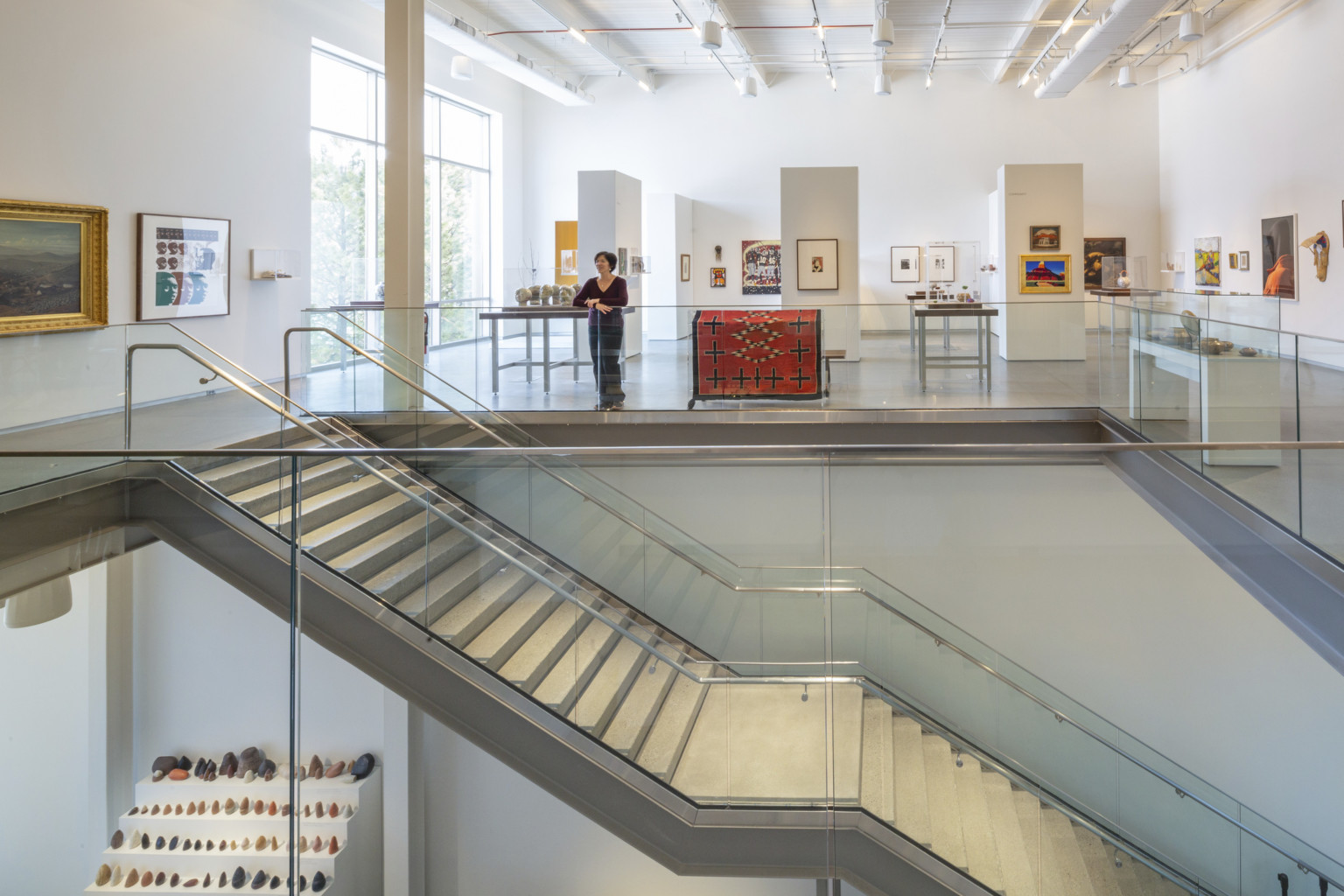
An extension of the lobby, the museum allows patrons to connect with the art while attending a music performance.